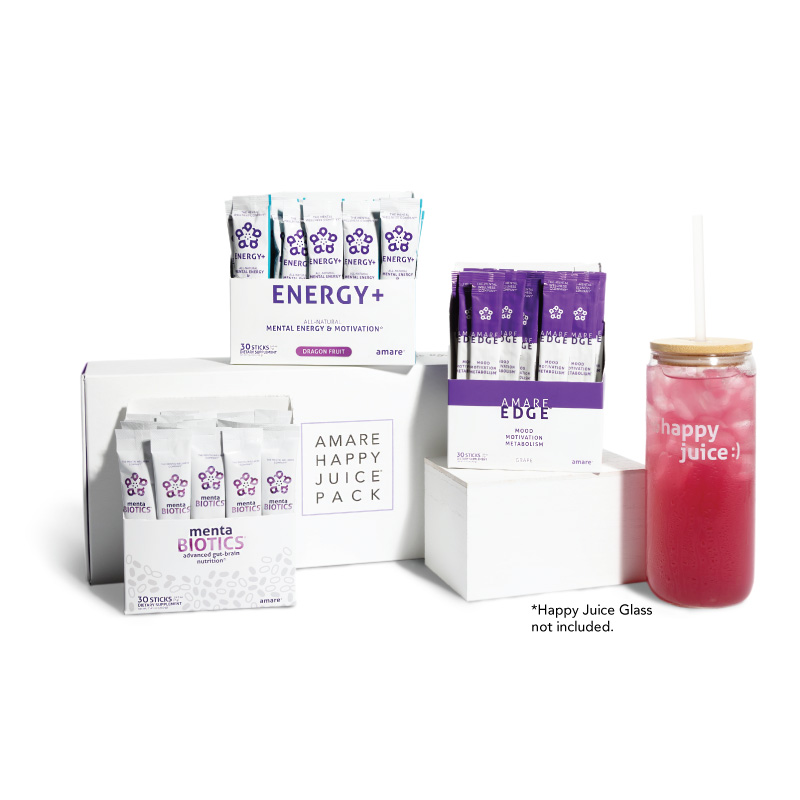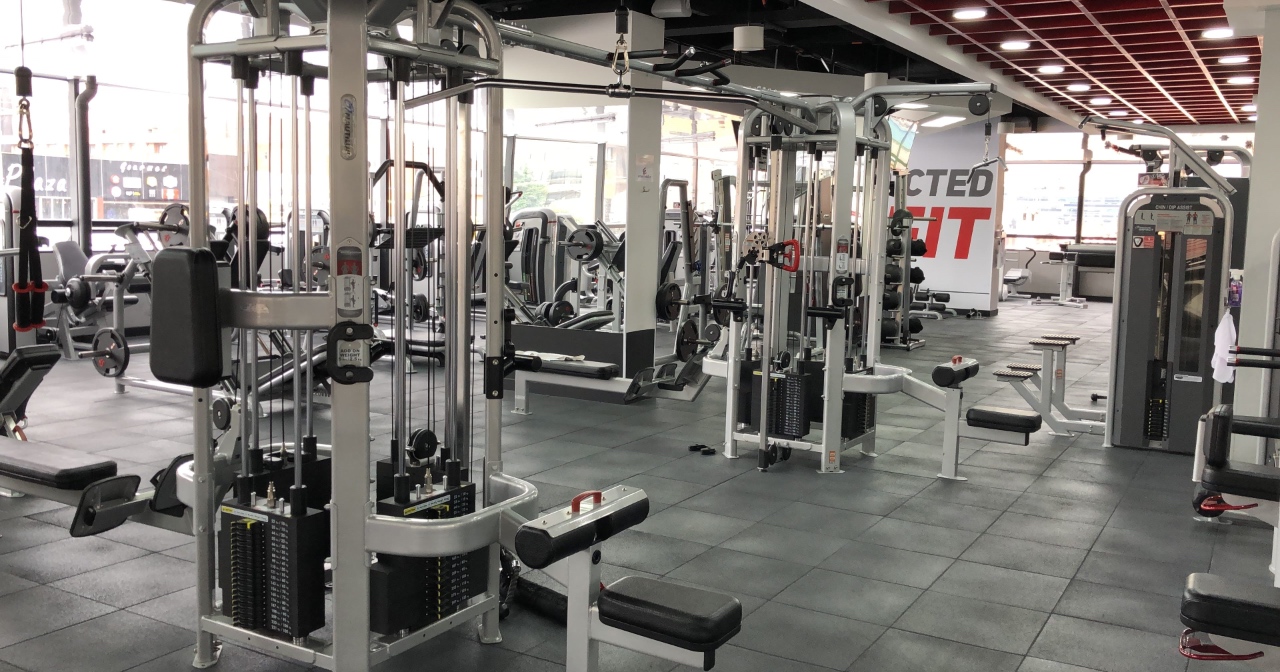Listen on: Apple Podcasts | Spotify
I get asked a lot of questions about weight training. Most questions don’t require a full article to answer. So, I decided to publish a “frequently asked questions” post with many of those questions. I hope you find it helpful.
You can also get free access to many training tips in the VIGOR Training Facebook group, under the category “Training Tips.”
If you don’t see your question answered and you’re a Nikkola Newsletter subscriber, email me and I’ll answer it for you.

Feel Better Fast. Guaranteed.
Energy+, EDGE, and MentaBiotics make up the Happy Juice supplement stack, with ingredients clinically proven to:
- decrease anxiousness scores by 55%
- decrease irritability scores by 60%
- decrease fatigue by 64%
- decrease anger 54%
- decrease tension by 45%
- decrease confusion by 43%
- decrease overall distress by 49%
- increase good bacteria by 70%
- decrease negative mood by 105%
- increase positive mood by 211%
Getting Started
Is weight training and resistance training the same thing?
Yes.
Is weight training better than cardio?
Yes. Though cardio burns calories, it does not build or help you maintain muscle mass or bone density. Resistance training builds muscle, bone density, movement proficiency, range of motion, strength, and power. It also improves cardiovascular function and burns calories.
What exercises are most important when getting started?
Almost every exercise you’ll ever do is a version of a select group of movements or a combination of them. These movements are:
- Squat
- Lift (from the floor)
- Pull
- Press
- Rotate
For example, a lunge is a form of a squat. A power clean begins with a deadlift. A medicine ball slam is a form of a vertical pull.
A beginner-level strength training program should focus on these movements.
In addition to focusing on these foundational movements, I also recommend keeping the rep range relatively low. About 5-12 reps per set. In this way, you can focus on perfect form and push yourself to use more weight each week.
Unfortunately, most people new to strength training use high rep ranges while using lousy technique. Like learning how to swing a golf club or shoot a gun, it’s challenging to learn the right technique later if you practice poor technique now. You also significantly increase your risk of injury.
Basic movements. Low rep ranges. As much weight as you can use while maintaining strict form.
Technique & Programs
What type of resistance training is best for fat loss?
It depends. If you’re brand new to strength training, lower-volume, heavy resistance training would be more appropriate. This ensures you perform the movements with strict form. Your technique is the most crucial part of your training programs.
If you are experienced with resistance training, I usually recommend the following (assuming you eat a high-protein diet, take your foundational five, and get sufficient, quality sleep):
- 8-12 weeks of heavy, lower volume strength training, using the big compound movements.
- 8-12 weeks of heavy, higher-volume hypertrophy training, with 2-4 working sets and 6-20 reps per set. This is what most people think of as muscle-building training.
- 8-12 weeks of higher-volume, high-intensity strength training using higher reps and short rest periods. This is like the pace of a Crossfit workout without as much of the calisthenics or gymnastics movements.
- 3-8 weeks of more athletic development training to give your body a break before starting over again.
My VIGOR Strength Athlete and VIGOR Everyday Athlete programming cycle through these training periods, and a few others, each year. When you eat right, you should see a significant improvement in how you look and how your clothes feel.
What equipment should I buy for my home?
While home gym equipment isn’t cheap, if you commit to using it over the next few years, it’ll probably be on par with the cost of a monthly gym membership. You can usually find used equipment to save some money as well. I recommend the following as a minimal, effective home gym setup:
- Squat rack with adjustable safety pins, pull-up bar, and a few other optional attachments. The Hammer Strength HD Elite Multi Rack would be one example.
- Adjustable bench
- Barbell and Olympic plates (less likely to damage floors)
- Dumbbells up to 50 lbs, 75 lbs, or 100 lbs. with appropriate rack(s)
- Rubber flooring
Should I use a mixed grip or pronated grip when doing deadlifts?
For most people, I recommend a pronated grip (both palms facing backward). Though you can hold onto a heavier bar with a mixed grip (one palm facing forward, one backward), you also increase your risk of a distal bicep tendon rupture significantly.
For most people, using a pronated grip is safer. If the amount of weight you can deadlift exceeds what you can hold onto, use straps, but only for heavy sets.
Other Related Questions Answered
- What is the purpose of tempo in your training?
- How much weight should I use? How many reps should I do?
- Why am I sore where I shouldn’t be?
- What does it mean to “keep your body guessing?”
Health Effects
Is strength training good for older adults?
Absolutely! Even older adults can build muscle if they’ve never strength trained before, or if it’s been a long time. For those who have strength trained throughout their lives, continuing to do so will help maintain strength, bone density, mobility, and muscle mass, which all affect longevity and quality-of-life.
Does weight training cause hair loss?
While weight training causes an acute (and beneficial) rise in testosterone, and chronically, excessively high testosterone levels can lead to hair loss, weight training does not cause hair loss.
Testosterone’s impact is too small and too short-lived to have any kind of impact on hair loss.
You might notice a correlation between bodybuilders and hair loss. That correlation comes from the use of steroids, not from strength training.
Does resistance training increase blood pressure?
Blood pressure may rise slightly during a set. That’s led some to caution people against strength training, especially if they have high blood pressure.
However, a meta-analysis of existing research shows that following a consistent strength training program lowers systolic and diastolic blood pressure.
Does weight training improve health, or does it just make you look better?
Without question, resistance training improves health. A 2012 review summarized the health benefits of resistance training in its abstract as follows:
Inactive adults experience a 3% to 8% loss of muscle mass per decade, accompanied by resting metabolic rate reduction and fat accumulation. Ten weeks of resistance training may increase lean weight by 1.4 kg, increase resting metabolic rate by 7%, and reduce fat weight by 1.8 kg. Benefits of resistance training include improved physical performance, movement control, walking speed, functional independence, cognitive abilities, and self-esteem. Resistance training may assist prevention and management of type 2 diabetes by decreasing visceral fat, reducing HbA1c, increasing the density of glucose transporter type 4, and improving insulin sensitivity. Resistance training may enhance cardiovascular health, by reducing resting blood pressure, decreasing low-density lipoprotein cholesterol and triglycerides, and increasing high-density lipoprotein cholesterol. Resistance training may promote bone development, with studies showing 1% to 3% increase in bone mineral density. Resistance training may be effective for reducing low back pain and easing discomfort associated with arthritis and fibromyalgia and has been shown to reverse specific aging factors in skeletal muscle.
Wayne L Westcott, Resistance training is medicine: effects of strength training on health
Read more: 9 Reasons Strength Training is Critical for Long-Term Health, Fitness, and Longevity
Weight Training & Nutrition
Should I eat more protein when weight training?
Based on the research, a higher-protein diet benefits both those who exercise and those who do not. Whether you weight train or don’t, I recommend eating about one gram of protein per pound bodyweight. Though it won’t hurt to eat more, it probably won’t benefit you much either.
Do I need to eat right after a strength training session?
Unless you’re a professional or Olympic athlete, you don’t need to worry about eating immediately after your training session. As long as you eat a healthy, high-protein meal within a couple of hours after your workout, you’ll be good to go.
What supplements should I take when weight training?
I almost always recommend healthy people start with the Foundational Five:
While protein is essential, and essential amino acids and creatine monohydrate provide some performance-enhancing benefits, most people need to build a solid nutrition base first.
Of course, most nutrition stores and supplement companies will try to sell you pre-workout drinks and protein shakes, but for most people, such supplements are only helpful once they’ve covered their basic supplement needs first.
Weight Lifting Accessories
Is it okay to wear gloves when lifting weights?
Unless you’re a hand model who needs perfectly soft skin, I do not recommend wearing gloves. They change the dynamics of your grip. Go without the gloves, and given enough time, you’ll develop calluses that make gripping the bars and dumbbells more tolerable.
Are free weights better than machines?
It depends. For most healthy and uninjured people, free weights are a better choice. You have to stabilize part of your body while you move with another part.
However, suppose your goal is to maximize muscular development. In that case, if you’re an older adult just getting started, or if you’re working around an injury, a machine might be a better option.
That said, many fitness “experts” speak of machines as though they’re always inferior. They’re wrong.
Should I wear a weight belt?
For most people, I recommend a belt only when doing max lifts like deadlifts and squats, but not for regular training sessions, and never for movements like bench press, arm exercises, etc.
You want your core to do as much of the work in stabilizing your upper body as possible, not a belt that provides artificial stabilization.
Should I wear knee wraps / elbow wraps?
There are a couple of options when it comes to covering knees and elbows. You could use sleeves or braces. I’ve found that most people just say “wraps” when talking about them both.
Powerlifters often use wraps around their knees for heavy sets of squats. The wraps provide a slight mechanical advantage, allowing them to lift more while also protecting their joints. Most people reading this don’t need to consider wraps.
Braces maintain proper alignment and support when you have a compromised joint or if you’re working through an injury. Some people believe braces could protect them from a future injury, but I disagree. Most injuries take place in everyday life when you’re not wearing a brace. The purpose of strength training is to train you to move through daily life better. So, skip the brace unless your doctor or physical therapist told you to wear one.
Sleeves, on the other hand, are different, though they look similar. Sleeves cover your joint like a brace, but offer very little support. Instead, they provide some compression and help keep your joint warm. If you have achy joints or occasional pain without an injury, you might benefit from wearing a sleeve. However, wear it when you’re training that area. I often see guys walking wearing knee sleeves when doing upper body workouts. Maybe the sleeves make them feel more athletic, but they’re missing out on making their knees and surrounding muscles do what they should do on their own.
Photo by Rodrigo Sarsfield on Unsplash



